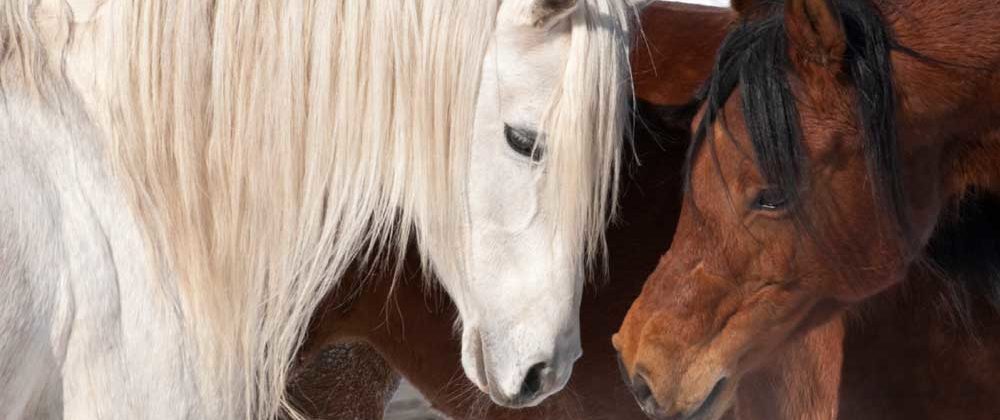Stable Management
Reducing the Risk of Respiratory Ailments
Fresh Air is the best Air
Horses are naturally designed to live outside. With shelter from the wind and elements and access to fresh water and good quality hay most horses can live quite comfortably surrounded by their companions without a stable. This is not always a convenient option for their human counterparts.
The life of a domestic horse requires consumption of hay and often grain to provide enough energy for the tasks we ask. The domestic horse is frequently stabled and ridden on sandy surfaces which can introduce many dusts and moulds that increase the chances of respiratory ailments.
What can you do to improve air quality and reduce dust in your stable?
Ventilation
Fresh air without drafts will go a long way to minimizing a horses exposure to harmful environmental irritants. A combination of inlets (ie vents) and outlets (ie cupolas) help provide ventilation especially once barn windows and doors are closed up to provide warmth in the winter. Mechanical ventilation is another consideration.
Insulation
Minimizes temperature fluctuations caused by warm days and cold nights. Proper insulation not only keeps the barn warm in the winter but when combined with good ventilation, a barn will avoid condensation problems which can make for cold, clammy and damp conditions.
Bedding
Choose high quality, absorbent bedding with low dust levels. If you can smell ammonia – your horse’s airways are at risk. Ammonia can also increase mucus production. More turn-out time equals less urine in the stall. Daily, proper cleaning of stalls is of course a must and use of an ammonia control product can prove useful in eliminating this noxious gas. It is recommended to turn out horses prior to cleaning the stable as bedding is the 2nd most common source of dust in the barn. Savvy stable workers wet down floors before sweeping and also wear a dust mask.
Drainage
Floors that allow urine to be absorbed and travel down through the flooring material layers can suffer from odor retention. Non-porous floors depend on slope for drainage and/or adequate bedding to soak up urine.
Feed
Feed good quality hay and grain. Hay is the staple of the horse’s diet providing fibre which is essential for healthy gut function but it is also the single most common source of dust and mould for horses. Even good quality hay will contain some dust; sprinkling hay with water can reduce
the dust by half. Feeding from the ground
and not throwing hay over the top of stall
door will also reduce air bourne dust. All
hay will have some mould present as there
are many types of fungi in field crops. Hay
that has been baled damp is the largest
concern as this provides an environment of
moisture and heat for mould to thrive and
multiply. Mould spores are very small and
often undetectable to the human eye but can
travel deep into the lungs of a horse. Avoid
round bales which can become havens for dust and mould.
Footing
Fine smooth particles are more prone to suspension than heavier angular particles. Careful material selection and maintenance are required to reduce dust in arenas. When course materials break down over time partial or full replacement should be considered. Check moisture content of footing weekly and water as required increasing the weight of footing particles. Consider additives and environmentally friendly oils to held bind particles and slow evaporation.
A trip down through the respiratory system
A horse in a dusty environment is more prone to infection than a horse in a cleaner environment.
A horse at rest taking 12 breaths per minute can inhale and exhale approximately 60 litres of air/minute. A top athlete can take over 150 breaths/minute moving over 2,250 litres of air through the lungs. Airborne dust, noxious gases and infectious agents can hinder or halt a horse’s athletic career.
Air enters the nostrils where it is warmed and humidified before entering the trachea. Then air travels along an ever increasing number of initially larger airways (bronchi) to small airways (bronchioles). Airways lined by cilia, move mucus and particles up from the lungs. There is also mucus producing cells in the linings of airways. In a state of infection mucus can become tenacious. Finally a gas exchange occurs at the end of the journey in the alveolar sacs. A final defense barrier exists in the alveoli. Tiny inhaled particles are cleaned up by cells called macrophages which engulf material ranging from tiny particles of dust to bacteria. However a heavy burden of dust can decrease the ability of those cells to fight infectious agents such as bacteria.
The lung evolved to deal with air. To maintain a healthy lung, minimize the pollutants it is exposed to.


